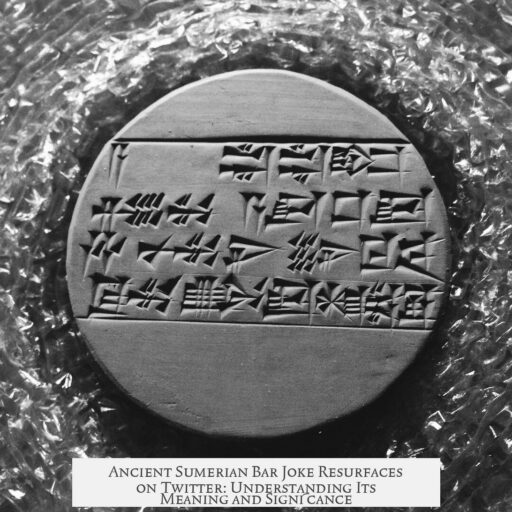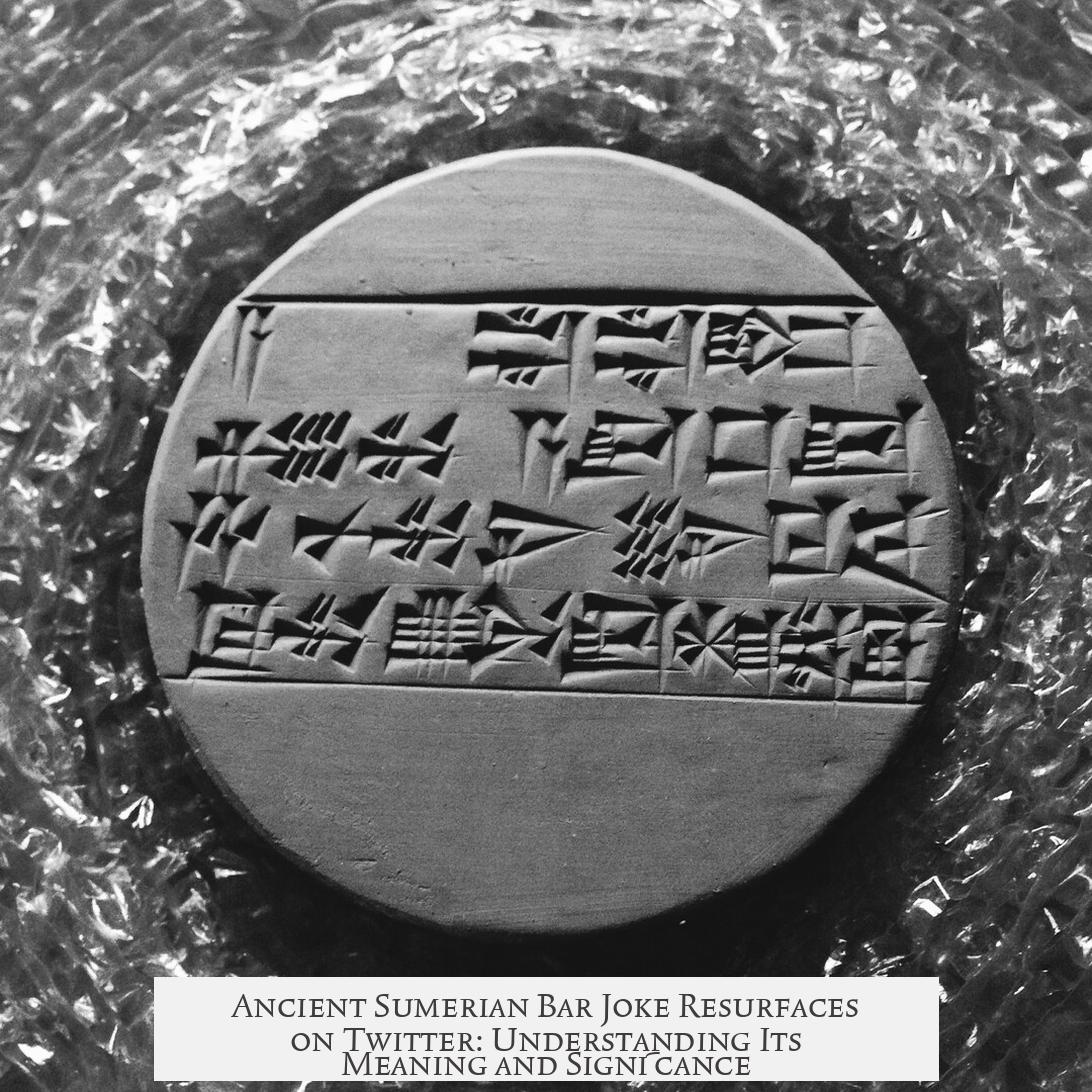The ancient Sumerian bar joke involving a dog entering a tavern carries layered meanings that go beyond simple humor. At face value, it depicts a dog complaining about not seeing anything upon entering a tavern and deciding to “open this one,” which could mean opening an eye. Yet, scholars suggest it may also involve wordplay with sexual undertones linked to the tavern’s probable identity as a brothel.
This Sumerian text, officially cataloged as SP 5.77 in the Electronic Text Corpus of Sumerian Literature (ETCSL) hosted by the University of Oxford, is widely accepted as authentic. The proverb collection it comes from includes multiple animal-themed jokes, particularly involving dogs. The original text’s transcription employs specialized cuneiform symbols, showing the phrase where a dog enters a place described as an “ec2-dam,” interpreted as an inn or tavern.
One standard translation reads: “A dog entered a tavern and said: ‘I can’t see a thing. I’ll open this one!'” The “open this one” phrase likely references the dog opening one eye, revealing a straightforward punchline about visual awareness.
However, further examination by various scholars challenges this simplistic view. Edmund Gordon, in his research published in the Journal of Cuneiform Studies, explains that the tavern is more than a drinking place; it is thought to also operate as a brothel. This introduces the possibility that the “dog” seeks to peek behind closed doors with an implied curiosity about the activities inside. Hence, the phrase “I’ll open this one” might imply a proposal to open a door, possibly with sexual connotations.
Adding to this interpretation, a study in the journal Orientalia notes that the Sumerian verb ŋál tak4, meaning “to open,” occasionally carries sexual implications. While it’s unclear whether this applies directly to the joke or only to similar proverbs, this point lends credence to the idea that the joke contains bawdy meaning.
This layered meaning reflects Sumerian vernacular usage, where animals in literature often embody human social roles and behaviors. Seth Richardson highlights that animals like dogs often act within humanlike scenarios — holding jobs or engaging in social activities such as drinking in taverns. This cultural framework enabled humor involving animals behaving like humans, including jokes resembling modern bar setups.
Further in the same proverbial collection, there are several dog-centric jokes situated in various social contexts, such as warehouses. These examples emphasize the anthropomorphic portrayal of animals and their involvement in everyday human social life, including scenes of mischief and folly.
Interestingly, the joke precedes a proverb that describes “to a dog a dream is stupor,” which might hint that the dog’s not seeing anything could be sleep-related or imply a state of irresolution. This adds ambiguity about the joke’s exact punchline but enriches the interpretive possibilities.
In summary, the joke shows:
- A dog entering a tavern and claiming blindness, deciding to “open this one” — literally or figuratively
- Possible wordplay where “open” could refer to opening eyes or a door
- A tavern functioning as a brothel, opening the door to bawdy or sexual interpretations
- Scholarly debate on the verb’s connotations suggesting potential double entendre
- A reflection of Sumerian cultural imagery assigning animals human social roles
- Multiple humorous proverbs employing dogs in human-like misadventures
This Sumerian “bar joke” holds enduring appeal due to its structural resemblance to modern non-sequitur humor. It also provides insight into Mesopotamian social life and literary traditions, blending straightforward comedy with subtle sexual innuendo. Scholars appreciate the joke both as a linguistic artifact and as a cultural mirror revealing layers of humor in an ancient civilization.
Key takeaways:
- The joke is authentic and comes from a reputable academic source, ETCSL.
- It involves a dog entering an inn/tavern, saying it can’t see and offering to “open this one.”
- Literal reading sees it as a dog opening an eye after entering a dark place.
- Scholars point to the tavern likely being a brothel, suggesting sexual innuendo in “open.”
- Sumerian linguistic clues hint that the verb “open” may carry sexual meanings.
- The joke fits into a broader Sumerian cultural practice of attributing human traits to animals in literature.
- It mirrors modern “walks into a bar” joke structure, showing continuity in humor styles.
What Does This Ancient Sumerian Bar Joke Actually Mean?
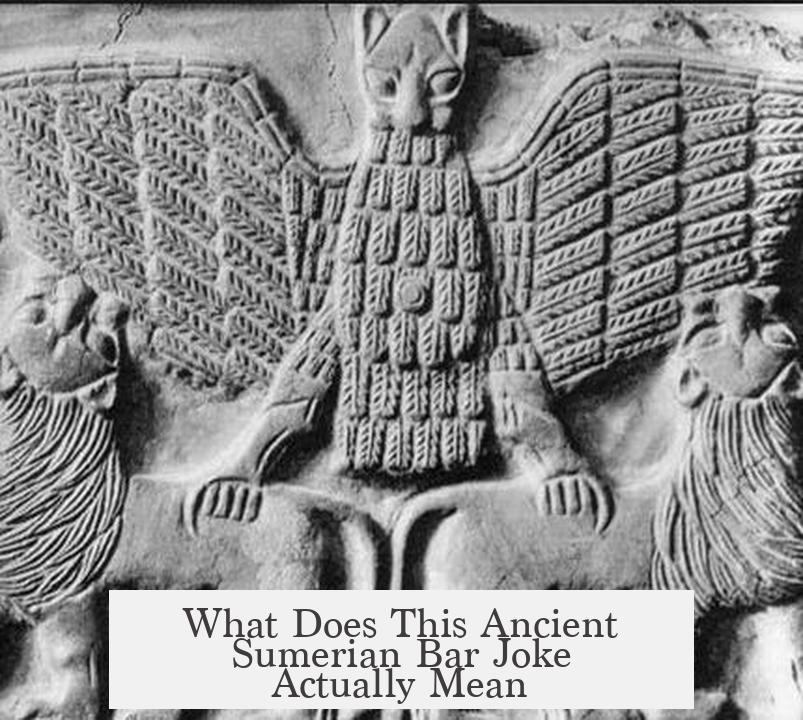
Here’s the quick answer: The ancient Sumerian joke about a dog walking into a tavern and saying “I can’t see a thing. I’ll open this one!” is either a cheeky pun about a dog’s closed eyes or a bawdy reference to a brothel, imbued with possible sexual overtones hidden in the nuances of the Sumerian language.
Now, why has this joke, which is roughly 4,000 years old, suddenly become a viral hit on Twitter as a quirky non-sequitur? And more importantly—what’s its real meaning beneath the surface? Let’s dive into the fascinating blend of ancient humor, language puzzles, and social context that make this piece more than just a funny one-liner.
The Source That Bares All (or Almost All)
First, confirming the joke’s legitimacy is crucial. The text comes from the Electronic Text Corpus of Sumerian Literature (ETCSL), a trusted academic database run by Oxford University. This isn’t internet folklore; it’s a real snippet from Sumerian proverbial collections, specifically catalogued as SP 5.77.
The original Sumerian lines read—using some fancy Unicode—to distinguish homophones:
ur-gir15-re ec2-dam-ce3 in-kur9-ma nij2 na-me igi nu-mu-un-du8 ne-en jal2 taka4-en-e-ce
Translated roughly, this means:
A dog entered a tavern and said: I can’t see a thing. I’ll open this one!
This joke falls into a collection focused heavily on animal proverbs, especially dogs—apparently a favorite comedian in ancient Sumer.
Is This Just a Dog With Its Eyes Closed?
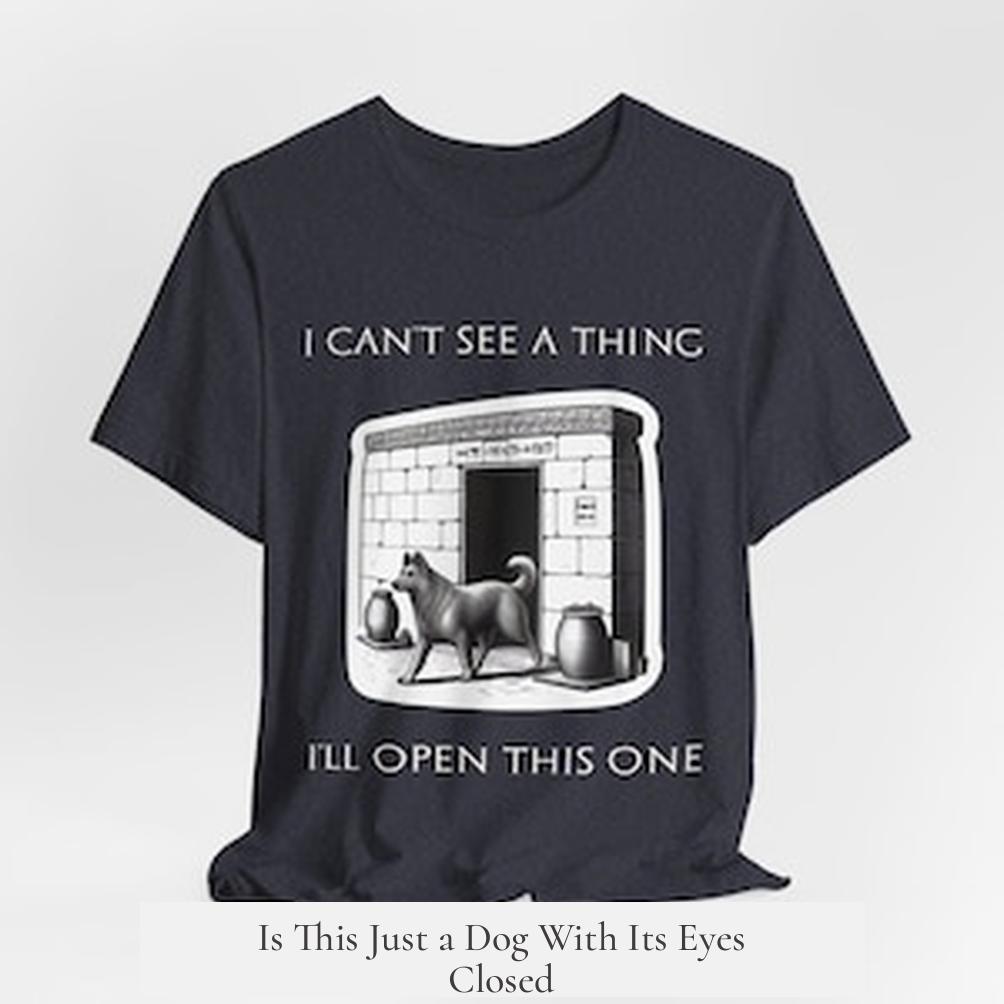
The simplest interpretation is straightforward. The dog claims it can’t see, then decides to “open this one,” most likely an eye, implying the dog hadn’t even opened its eyes yet. It’s a simple, silly gag, grounded in everyday pet behavior. Have you ever seen a dog stumble around with sleepy eyes? Makes sense.
This reading aligns with the premise of classic “walks into a bar” jokes: set the scene, then deliver a punchline that flips expectations. The dog isn’t helpless; it’s just lazy about opening its eyes. Social media users often latch onto this surface-level interpretation, appreciating its absurdity and relatability.
Or Is It Risqué Humor From a Sumerian Brothel?
The story deepens when we consider scholarly interpretations. Edmund Gordon, writing for the Journal of Cuneiform Studies, suggests the “tavern” or “inn” here (Sumerian éšdam or ec2-dam) likely doubled as a brothel. The dog could be a stand-in for a patron trying to “see what’s going on behind closed doors.”
Even more interesting is the verb translated as “open”—ŋál tak4 in Sumerian—which some scholars speculate carries sexual connotations. This isn’t out of left field; Sumerian proverbs sometimes used playful language with double meanings. The “opening” might be an innuendo, making the joke bawdy rather than just silly.
The debate isn’t settled. We don’t know if the sexual sense applies in this proverb only, or more broadly across Sumerian texts. But it’s a strong hint that the ancient humor had layers, much like modern sitcoms or stand-up routines.
Animals in Sumerian Storytelling: More Than Cute Sidekicks
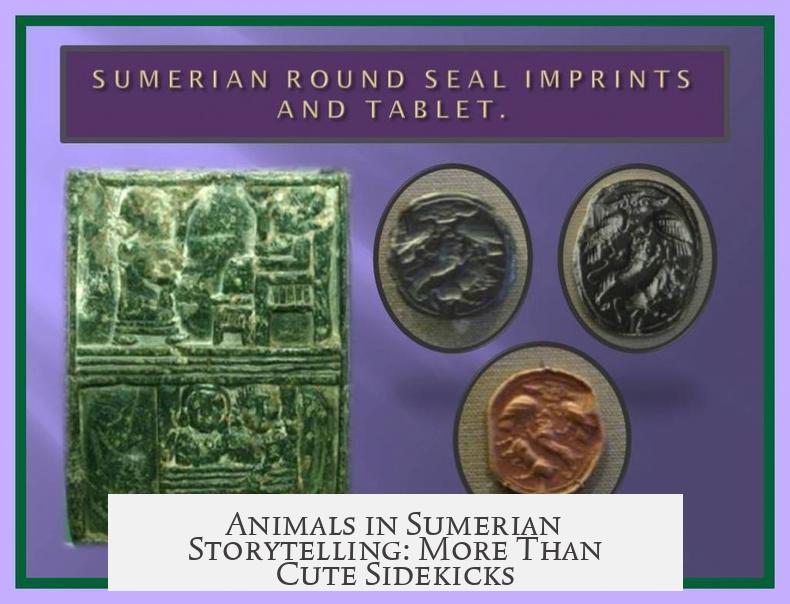
That a dog is the star here fits a bigger pattern in Sumerian literature. Animals often played human roles with flair, adopting jobs, families, and social lives. A fox might be a house-builder; an ox a proud official; and a dog could hang out in taverns (or brothels), indulging in human vices.
It’s a little like cartoons with talking animals today—ancient Mesopotamian style. This familiarity makes the joke all the more relatable and enduring. The Sumerians clearly enjoyed giving their furry friends complex roles, opening the door wide (pun intended) to humor that resonates across millennia.
More Dog Jokes? You Bet!
This isn’t the only canine quip in the collection. Another proverb (SP 5.102) describes a dog entering a warehouse and getting his leg broken by a wooden door-bolt. The dog puzzled over its own tail, mistaking it for something behind it—a kind of slapstick routine reminding us that humor about clumsy dogs is no new invention.
The parallels to the modern “walks into a bar” joke format are uncanny. Ancient Sumerians loved absurd scenarios with animal protagonists, just like us. It’s a reminder that humor—and dogs bumbling about or making cheeky remarks—is truly timeless.
“To a Dog, a Dream Is Stupor” — Might This Explain the Joke?
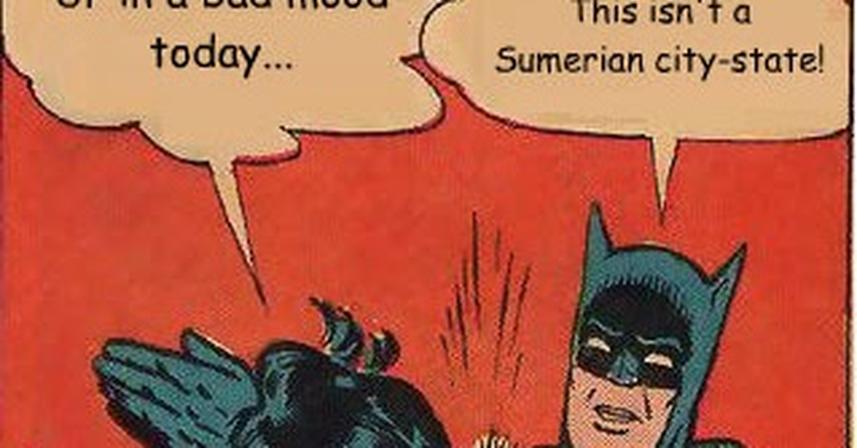
The proverb before the tavern joke (SP 5.76) reads, “To a dog a dream is stupor.” This could hint that the dog in the joke was sleepwalking or groggy, explaining the poor vision. The dog hadn’t realized it needed to open its eyes.
If we accept this, it’s a neat punchline: the dog is both oblivious and determined. It’s an endearing profile for the clueless but earnest pub-hopper. But, again, this interpretation competes with the brothel angle and potential sexual innuendos.
Why Does This Joke Matter Today?
First off, it’s a stretch of human experience—a 4,000-year-old carryover of humor about animals, taverns, and social mishaps. That’s impressive longevity for any joke format.
Second, it reminds us that humor, including puns and social slyness, has ancient roots. The Sumerians weren’t just farmers and builders; they were observers of life’s quirks, masters of wordplay, and keen satirists. We might view their texts as dry history, but really they were telling jokes on the side.
Third, the debate over literal versus risqué interpretation teaches us about the complexity of translating ancient languages and cultures. A “simple” joke might be layered with meanings lost or hidden in translation. It’s a lesson in humility for historians and a tease for language lovers.
Practical Tips for Decoding Historical Humor
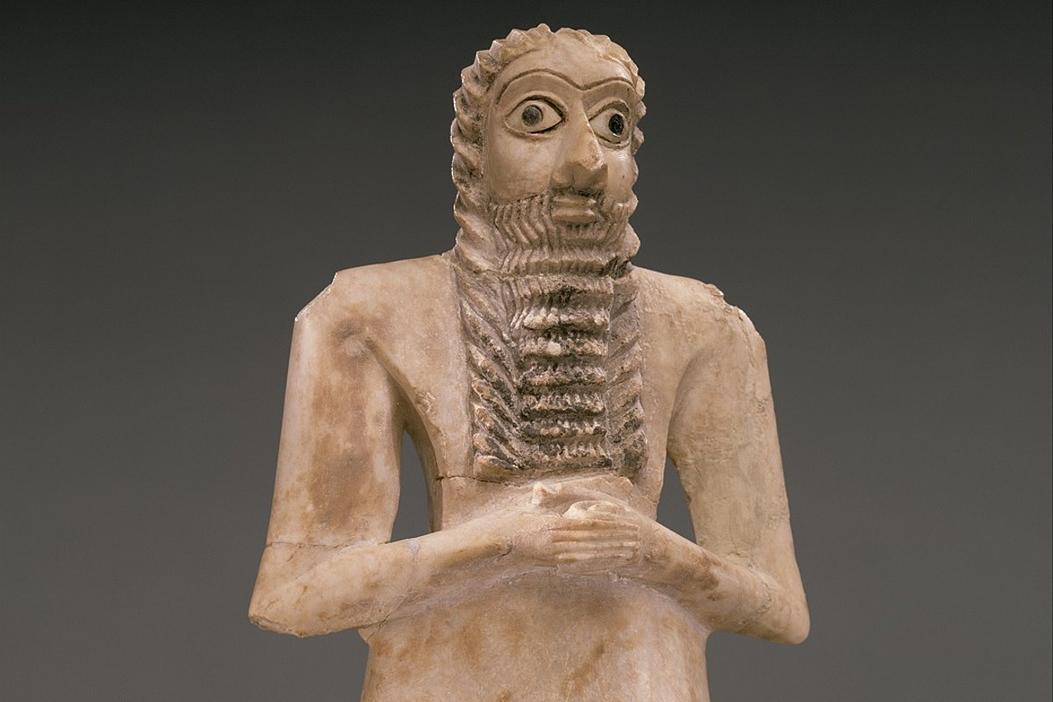
- Check Reliable Sources: Anchor your trust in academically vetted collections like ETCSL, not random internet posts.
- Understand Cultural Context: Taverns had different social roles in Sumer—sometimes inns, sometimes brothels. Knowing this shifts the joke’s shade.
- Watch for Wordplay: Some words carried multiple meanings, especially in proverb collections filled with riddles and jokes.
- Consult Experts: Sumeriologists or cuneiform specialists can clarify ambiguous words—for example, whether “open” is innocent or a euphemism.
Final Thoughts: Ancient Jokes Prove We’ve Always Loved a Good Laugh
This Sumerian bar joke is more than a viral Twitter curiosity. It’s a tiny window into the humor, language, and social life of one of the world’s first civilizations. Whether the dog is literally opening an eye or metaphorically “opening” something else behind closed tavern doors, the joke works on many levels.
In a way, this little proverb connects us with ancient jokers—those who loved to surprise their friends with wordplay, enjoyed animal antics, and maybe, just maybe, reveled in just a bit of cheeky innuendo. Next time you hear a “walks into a bar” joke, remember—it might be echoing sounds first barked four millennia ago from a tavern in Sumer.
What is the original meaning of the ancient Sumerian bar joke about the dog?
The joke describes a dog entering an inn or tavern and saying it cannot see anything, then deciding to “open this one.” It likely refers to the dog opening one eye, revealing humor in the dog’s initial blindness.
Could the joke have a sexual or brothel-related meaning?
Yes, some scholars suggest the inn was also a brothel. The Sumerian word for “open” may carry sexual implications, hinting the joke might involve adult humor beyond just the dog’s vision.
How does this joke connect to modern bar jokes?
The setup mirrors contemporary humor where animals or characters enter a bar. It shows how this comedic formula has persisted for thousands of years with animals playing human roles.
Are there other similar dog-themed jokes in Sumerian texts?
Yes, the collection includes multiple dog jokes. For example, one involves a dog entering a warehouse and interacting humorously with a merchant. Dogs frequently appear in Sumerian humor and proverbs.
What challenges exist in interpreting the joke today?
Some meanings rely on wordplay or cultural context lost in translation. The joke’s nuances may be obscure because of ambiguous language and possible double entendres in Sumerian that modern readers might miss.
